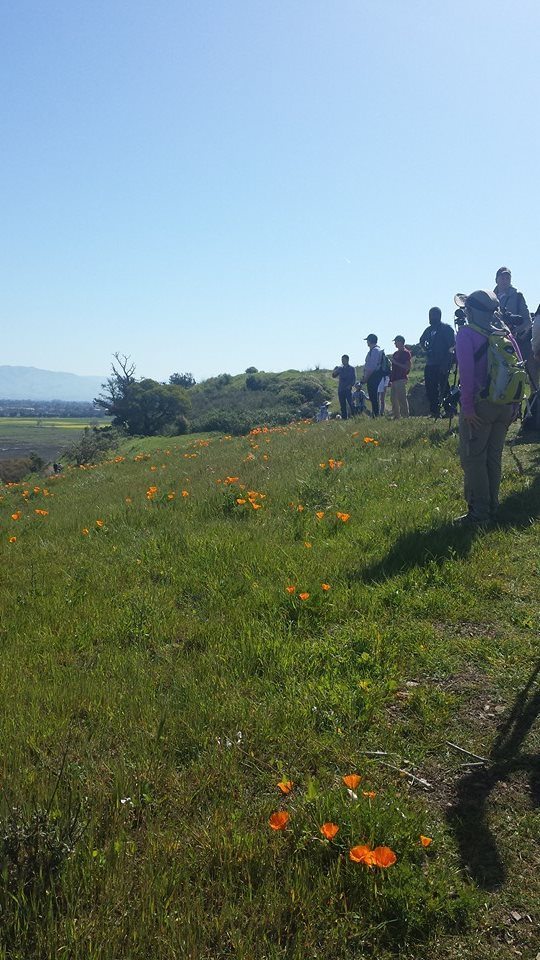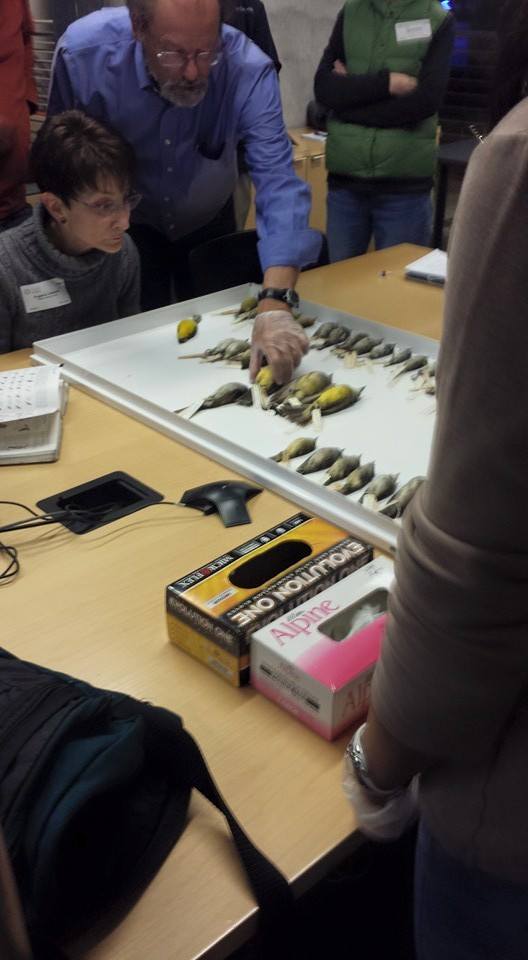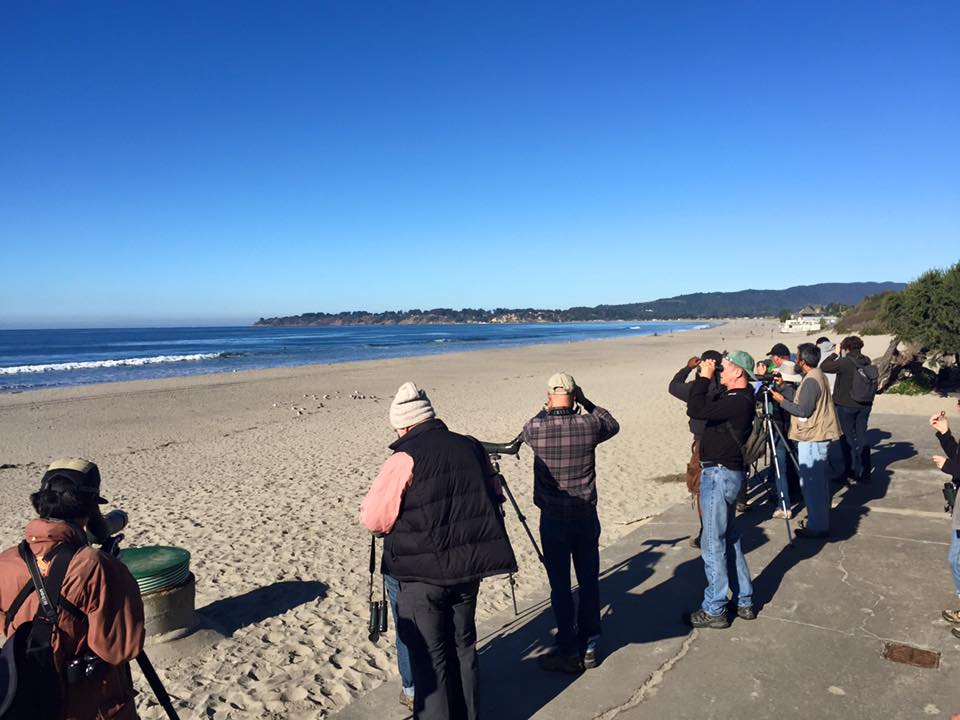Becoming a Master Birder
By Krista Jordan
In late 2014, I was scrolling through my Facebook feed and that’s when I saw it – a post by Golden Gate Bird Alliance for a Master Birder program, in partnership with the California Academy of Sciences. I had never heard of such a thing and was immediately intrigued. I had been birding in earnest for about two years at that point, and was really wanting to get to a “next level” but wasn’t quite sure what that would look like or how I would get there.
I quickly read the description and felt a rush. I had to do it. I can be impulsive but I hesitated as I read the requirements for the class. I really wanted to show up prepared and give it my all. Would I have enough time? Could I identify the requisite number of species by sight (100) and by ear (25)?
I slept on it for a night and the next day I printed out an ABA checklist and brought out my highlighter – 109 species by sight and 32 by sound. Not bad. I thought, “I can do this.”
My goals for taking the course were to:
- See birds that I might not see otherwise, mostly because I lacked knowledge of when and where to find them.
- Build my birding network by finding a group of people that are as nutty about birding as I am. (I might have been starting to annoy my non-birding friends.)
- Get more involved in the Bay Area birding community through volunteering, advocacy, and conservation efforts. I had taken enough from the birds, it was time to give back!
What I got — and got to give — was so much more.

Here are some course highlights:
The Instructors: You won’t find three expert birders who are more generous with their knowledge and time than Eddie Bartley, Jack Dumbacher, and Bob Lewis. Besides being approachable and kind-hearted, their passion for birds is positively contagious. I asked a lot of questions in the field (not all of them exactly smart) and was met with respect and kindness. Bring your curiosity and thirst for knowledge!
The California Academy of Sciences specimen collection: AMAZING! I have never had the opportunity to see museum specimens so at first it was a bit weird. Dead birds. Not for everyone. Through the course, though, Jack Dumbacher spoke a lot about the various uses of these specimens. And being able to handle them and see them up close really showed me the difference between species — e.g. the opportunity to have a Lesser and Greater Scaup side by side.


The Field Trips: Oh, the places you’ll go! And the birds you’ll see! With a pack of twenty-plus exceptional birders, I am convinced we didn’t miss much. Some highlights were a Chestnut-sided Warbler at Point Reyes, a pair of Hermit Warblers at Mitchell Canyon and a Manx Shearwater on the Monterey pelagic trip with Alvaro’s Adventures. There are actually too many to list.


Expanded Horizons and Hope: There is a huge group of passionate people in the Bay Area (and around the world) working every day to protect birds and inspiring others to do the same. I have friends who never much cared about birds before, but they are able to see my enthusiasm and have slowly come around. It might start with a text asking for a bird ID. Then they ask what “birding” is. You might be the only birder they’ve ever known. Soon, they want to learn more and ask to tag along. Your passion can be contagious and it’s powerful – remember that.
This experience has also given me a broader perspective of Audubon as well as a renewed hope for birds in the future. I grow so weary reading all the negative news about the trials birds face. The problems are overwhelming. Then I remember that I can make a difference day by day. And there is an army around me doing the same. That is how a problem gets smaller. That is how we make the world better for birds and for all of us.
The 2016 Master Birding course will start in February, and includes one evening classroom session and one field trip each month through December.
Tips for those considering the course:
- Be prepared to devote a significant amount of time, and pace yourself. Lectures, homework, field trips and requirements — including leading a field trip of your own, monitoring a patch two times per month, a research paper and presentation — can be daunting. Being organized from the outset will make it all manageable.
- Those with full-time jobs and other obligations should consider how much actual time they are able to spend. The MB course is rigorous but worth it! If you can, go for it, but be honest with yourself and loved ones about how much time you intend to devote.
- Have fun! The more you put into the class, the more you will get out of it. If your goal is the certificate, that’s great, but the class was also a wonderful entrée into the broader scope of Bay Area birding. It really opened up a whole new world for me.
At the time I’m writing this, it’s mid-December and I still have not completed all course requirements, but I fully intend to. I know that when I finally receive the certificate, I will look back on great memories of the friends I made, the places I traveled, and the birds I got to see.
——————————–
Note: 2016 may be the last time for a while that the Master Birding class is offered. (It’s a lot of work for the instructors!) If you’re interested, take advantage of it this year. For information and registration, see the Cal Academy web site.
Krista Jordan is development and communications manager for John Muir Land Trust in Martinez, California. As a volunteer, she manages Golden Gate Bird Alliance’s Twitter feed. (Check it out @GGAudubon!) She lives in Martinez with her husband Matt and their two cats.

